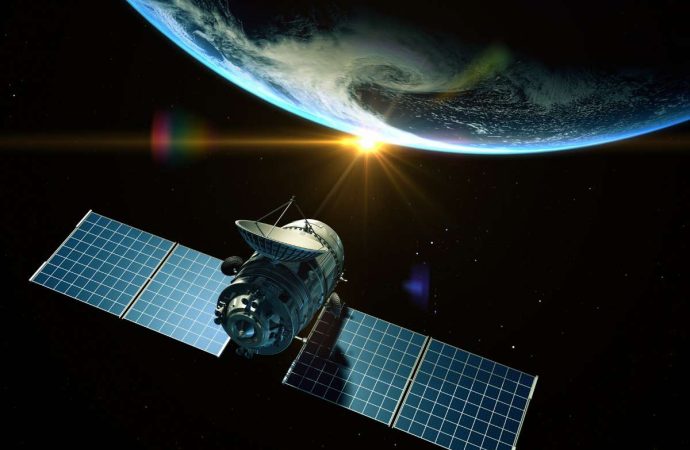Introduction Satellite transponders play a vital role in modern communication. They receive, amplify, and retransmit signals between earth stations and satellites. As demand for data connectivity grows, the global satellite transponder market is expanding quickly. From television broadcasting to broadband internet and government applications, transponders enable essential services around the world. This article explores market
Introduction
Satellite transponders play a vital role in modern communication. They receive, amplify, and retransmit signals between earth stations and satellites. As demand for data connectivity grows, the global satellite transponder market is expanding quickly. From television broadcasting to broadband internet and government applications, transponders enable essential services around the world. This article explores market size, share, industry analysis, growth drivers, emerging trends, and a detailed forecast to 2032. Whether you are an investor, operator, or service provider, these insights will guide your strategic decisions in a changing market.
Market Overview
The satellite transponder market covers transponder leasing and sales by satellite operators. In 2023, the market was valued at around 10 billion US dollars. As telecommunication companies, broadcasters, and governments seek reliable data links, transponder capacity has become a precious resource. Geostationary satellites account for the largest share of capacity, while medium and low earth orbit satellites are gaining attention. The shift toward high throughput satellites also influences market dynamics, offering greater bandwidth and cost efficiency.
Rise of the Global Satellite Transponder Market
Over the past decade, satellite transponders moved from a niche technology to a critical link in global communications. Early satellites carried only a few channels, but growing demand for high-definition TV, broadband internet in remote areas, and secure government links pushed companies to launch more and larger payloads. Investments by both public space agencies and private operators fueled this expansion. As of 2023, the global market was valued at around USD 14.17 billion and has since seen a steady uptick in new satellite projects.
Benefits of a Growing Transponder Market
A larger transponder market brings clear advantages. Increased capacity lets broadcasters deliver more TV channels—including UHD and 4K feeds—to viewers worldwide. Telecom firms can offer high-speed internet to rural communities that lack fiber networks. Governments and militaries gain extra bandwidth for secure data links and disaster response communications. Higher demand also drives down per-unit costs, making satellite services more affordable for emerging markets and niche applications.
Role of Satellite Transponders in Connectivity
Satellite transponders serve as the on-orbit “repeaters” that receive, amplify, and retransmit signals between Earth stations. They bridge gaps where undersea cables or cellular towers can’t reach—such as over oceans, deserts, or polar regions. In a typical satellite link, uplink signals from a ground station hit the transponder, which shifts them to a different frequency and sends them back down to another location. This role makes transponders essential for direct-to-home TV, global maritime and aviation communications, and emergency networks when terrestrial infrastructure fails.
Key Growth Drivers
Several factors are driving growth in the satellite transponder market:
- Rising Demand for Broadband Services: Remote areas and maritime sectors rely on satellite links for internet access. As homes and businesses demand high-speed broadband, transponder capacity is in high demand.
- Growth in Video Broadcasting: Television networks and streaming services lease transponders for direct-to-home and cable distribution. The rise of high-definition and ultra-high-definition content pushes bandwidth needs.
- Government and Defense Contracts: Military and public safety operations use satellite links for secure communication. Budget allocations for defense communications support transponder leasing.
- Maritime and Aviation Connectivity: Cruise ships, cargo vessels, and in-flight broadband services require continuous connectivity. Satellite transponders enable real-time tracking, navigation, and passenger internet.
- Emergence of High Throughput Satellites: New satellite designs offer hundreds of gigabits per second of capacity. Operators are investing in next-generation satellites, increasing available transponder bandwidth.
By understanding these drivers, stakeholders can anticipate demand and adjust capacity planning.
Market Segmentation
The global satellite transponder market can be segmented by orbit type, frequency band, application, and end user:
1. By Orbit Type:
- Geostationary Earth Orbit (GEO)
- Medium Earth Orbit (MEO)
- Low Earth Orbit (LEO)
2. By Frequency Band:
- C band
- Ku band
- Ka band
- Others (X band, V band)
3. By Application:
- Video Broadcasting
- Broadband Internet
- Government and Defense
- Mobile Backhaul
- Others (telemetry, tracking, control)
4. By End User:
- Telecom Service Providers
- Broadcasting Companies
- Government Agencies
- Maritime Operators
- Aviation Operators
Each segment shows unique growth patterns. For instance, the Ka band is expected to grow fastest due to its higher bandwidth potential, even though C band remains dominant for broadcast reliability.
Regional Analysis
Regional dynamics shape the satellite transponder market differently:
- North America: The region leads in broadband innovations and defense spending. Established operators and new entrants vie for market share, and demand for in-flight connectivity is strong.
- Europe: Europe’s focus on research and space programs drives investment in high throughput satellites. Broadcasting demand remains steady, and emerging remote areas seek better internet.
- Asia Pacific: Rapidly growing economies in China and India demand broadband and media services. The region shows the highest growth rate, driven by government programs to connect rural regions and support digital education.
- Latin America: Growing television viewership and limited terrestrial infrastructure encourage satellite use. Operators are expanding coverage to remote communities.
- Middle East and Africa: Investments in satellite infrastructure for energy, mining, and defense sectors support market growth. Internet penetration goals boost demand for transponder capacity.
Understanding regional strengths and challenges helps operators allocate capacity and plan satellite launches strategically.
Competitive Landscape
The satellite transponder market features major global and regional operators:
- Global Operators: Companies that own and operate large fleets of geostationary satellites, offering transponder leasing worldwide. They invest in next-generation high throughput satellites.
- Regional and Specialized Operators: These focus on specific regions or niche services, such as maritime connectivity or government contracts. They often partner with global operators to extend reach.
Competition centers on capacity pricing, coverage quality, reliability, and value-added services. Operators differentiate by offering managed services, ground network integration, and flexible lease terms.
Emerging Trends
Several trends are reshaping the satellite transponder market:
- High Throughput Satellite Deployments: New satellites provide massive capacity at lower cost per bit. This trend enables broadband for underserved regions and supports data-intensive applications.
- Satellite Constellations in Low Earth Orbit: Companies are launching hundreds of small satellites to create low latency networks. While these constellations focus on broadband, they also offer additional transponder-like capacity in specific orbits.
- Software Defined Satellites: Satellites with reconfigurable payloads allow dynamic allocation of transponder capacity. Operators can adjust coverage and bandwidth based on demand patterns.
- Partnerships and Alliances: Collaborations between satellite operators, ground network providers, and cloud companies deliver seamless end-to-end solutions. These partnerships improve service reliability and expand markets.
- Sustainability and Green Practices: Operators are adopting eco-friendly satellite manufacture and end-of-life disposal practices. Green credentials are becoming a competitive advantage.
By embracing these trends, operators can meet evolving user needs and optimize resource utilization.
Challenges and Restraints
Despite growth prospects, the market faces challenges:
- High Capital Expenditure: Building and launching satellites requires significant investment. Cost overruns and launch delays can impact capacity availability.
- Spectrum Congestion: The crowded radio frequency spectrum leads to interference risks. Regulatory coordination is required to ensure reliable service.
- Ground Infrastructure Costs: Providing global coverage demands a network of earth stations and gateways. Infrastructure expenses add to overall service costs.
- Competition from Terrestrial Networks: Fiber and 5G networks expand into new regions. In some areas, they offer lower latency or higher bandwidth, reducing reliance on satellite links.
Operators must address these challenges through innovation, regulatory engagement, and cost management.
Forecast to 2032
Analysts project the global satellite transponder market will grow at a compound annual growth rate of around 7 percent from 2023 to 2032. Key forecast insights include:
- Market Size Growth: From roughly 10 billion US dollars in 2023 to about 18 billion US dollars by 2032.
- Ka Band Leading Growth: Ka band capacity will represent over 40 percent of total leases by 2032, up from 25 percent in 2023.
- LEO Constellations Contribution: Low earth orbit systems will add niche capacity, accounting for 10 percent of the market by the end of the forecast period.
- Regional Shifts: Asia Pacific will surpass North America in year-over-year growth, driven by digital inclusion projects.
- Service Diversification: Beyond bandwidth leasing, operators will offer managed network services and edge computing in conjunction with transponder capacity.
This forecast helps operators and investors plan satellite launches, ground network expansion, and service offerings to capture future demand.
Conclusion
The global satellite transponder market is poised for significant expansion through 2032. Driven by broadband demand, video broadcasting, government applications, and new satellite technologies, transponder capacity remains in high demand. While geostationary satellites still dominate, high throughput and low earth orbit constellations are reshaping market dynamics. Key challenges such as capital costs and spectrum congestion require strategic solutions. By monitoring emerging trends and regional shifts, stakeholders can make informed decisions on capacity investment and service offerings. As the market grows, satellite transponders will continue to play a central role in connecting people, businesses, and governments around the world.

















